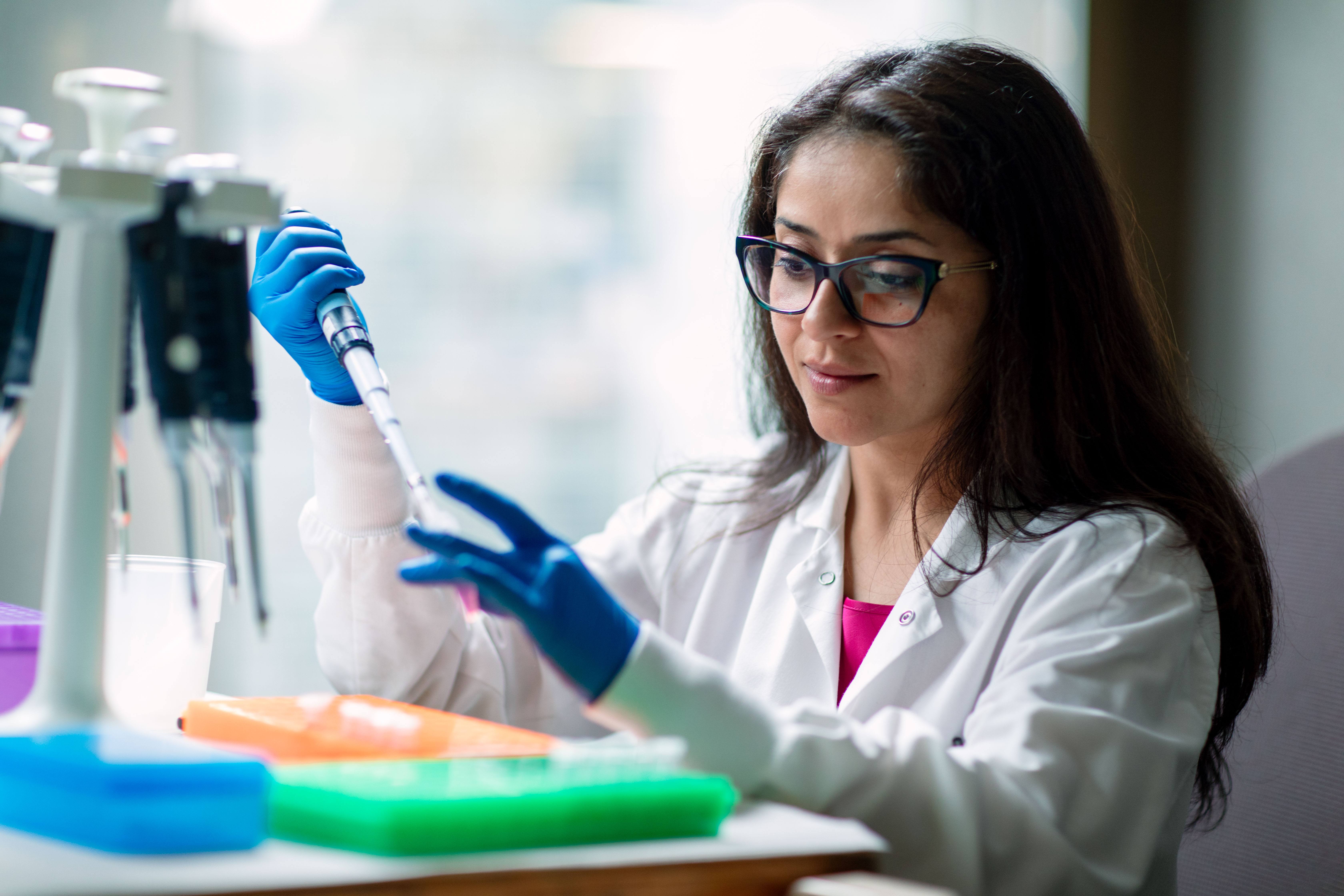-
How viruses hijack part of your immune system and use it against you

ROCHESTER, Minn. — An enzyme intended to prevent autoimmune disease can be hijacked and used by some viruses to avoid immune detection. That discovery from Mayo Clinic researchers and collaborators appears in PLOS Biology. There's also good news. The same team also defined how much viral genetic material is needed to reverse the process and instead activate the immune system against the virus.
This viral genetic material takes the form of RNA, the chemical cousin of DNA. RNA can be a single strand like a string or a complex structure called a double strand. Various human immune proteins recognize viral RNA because long stretches of double strands are present in the virus genetic material. Human cells create their own RNA to serve vital functions, which sometimes have short regions of double strands. If the immune system is activated by human double-stranded RNA, it would give rise to autoimmune disorders – when the immune system mistakenly attacks the body.
Humans have evolved a protein called "ADAR1" (adenosine deaminases acting on RNA) to prevent this autoimmunity. Aicardi-Goutières syndrome is a rare but debilitating auto-immune disorder that can be caused by a detrimental mutation in the ADAR1 gene. Patients suffering from Aicardi-Goutières produce inflammation responses against their own bodies that cause damage to tissues, especially the brain.
So how does ADAR1 prevent this autoimmunity?
ADAR1 recognizes the short stretches of double-stranded human RNA and changes them to single strands so they do not activate the immune system.
But ADAR is a double-edged sword, according to Roberto Cattaneo, Ph.D., leader of the Mayo Clinic-based research group. He explains that the ADAR1 protein is a balance between preventing autoimmunity and detecting viruses, but viruses have evolved to take advantage of that balance.
ADAR1 will act on viral double-stranded RNA as readily as human RNA. The protein changes viral double-stranded RNA to single strands, therefore protecting some viruses from immune detection.
The Mayo Clinic-based group was able to show that there is a threshold of viral double-stranded RNA where ADAR1 no longer can change enough to single strands. Then the immune system is activated by the presence of unchanged viral RNA double strands.
"There were already papers out with ADAR being exploited. We now can give numbers, a threshold. We have a quantitative evaluation of what is going on," says Dr. Cattaneo.
The study cites about 1,000 double strands of RNA as the threshold for immune activation. The researchers found the threshold by deleting the ADAR1 gene in cells. Then they collected and sequenced the human RNA from these experiments. By comparing the human RNA from normal cells and ADAR1-deficient cells, they were able to determine which genes are affected by ADAR1. Then they infected the ADAR1 deleted cells with measles virus or a mutant measles virus that produced more RNA. Neither virus grew well without ADAR1. However, when they re-introduced ADAR1 the normal measles virus was able to grow well, but the mutant virus did not. By comparing the amount of double-stranded RNA from the mutant virus to the normal virus, they were able to estimate the threshold of double-stranded RNA changed by ADAR1.
"Evolutionarily, the story is fascinating. It is an interferon-inducible gene. Nobody thought that they could be a pro-viral factor. It's not how we think about it," says Dr. Cattaneo.
The group's discovery of how viruses hijack ADAR and the RNA threshold may lead to new antiviral therapies that target ADAR1 so viruses cannot use it to hide from the immune system.
Co-authors on the team are: Christian Pfaller, Ph.D., and Ryan Donohue, Mayo Clinic; Leonid Brodsky, Ph.D., University of Haifa, Israel; and Stepan Nersisyan, Haifa University and Lomonosov Moscow State University, Russia.
The study was funded by the National Institutes of Health and Mayo Clinic.
###
About Mayo Clinic
Mayo Clinic is a nonprofit organization committed to clinical practice, education and research, providing expert, comprehensive care to everyone who needs healing. Learn more about Mayo Clinic. Visit the Mayo Clinic News Network.
Media Contact:
- Bob Nellis, Mayo Clinic Public Affairs, 507-284-5005, newsbureau@mayo.edu







